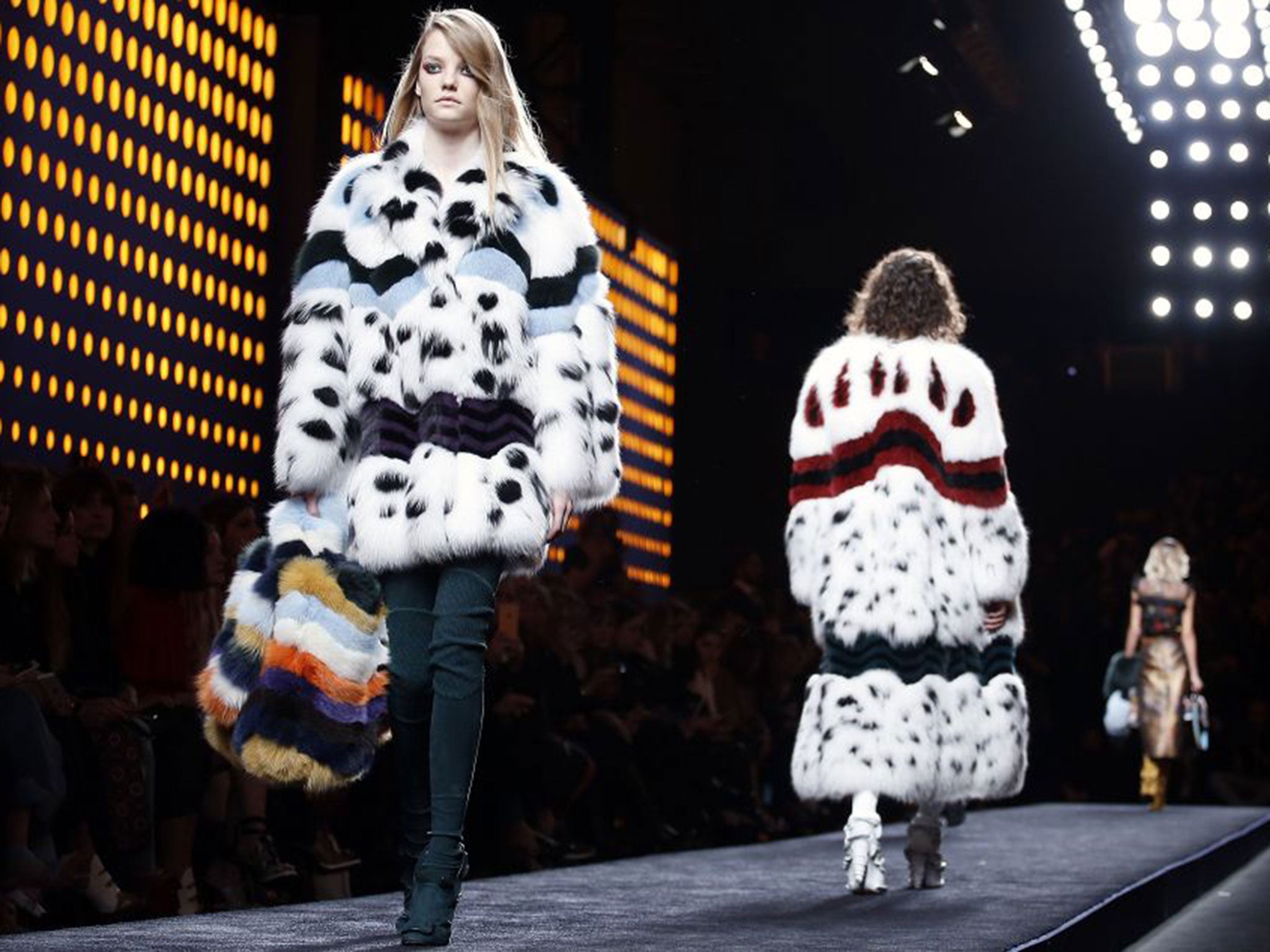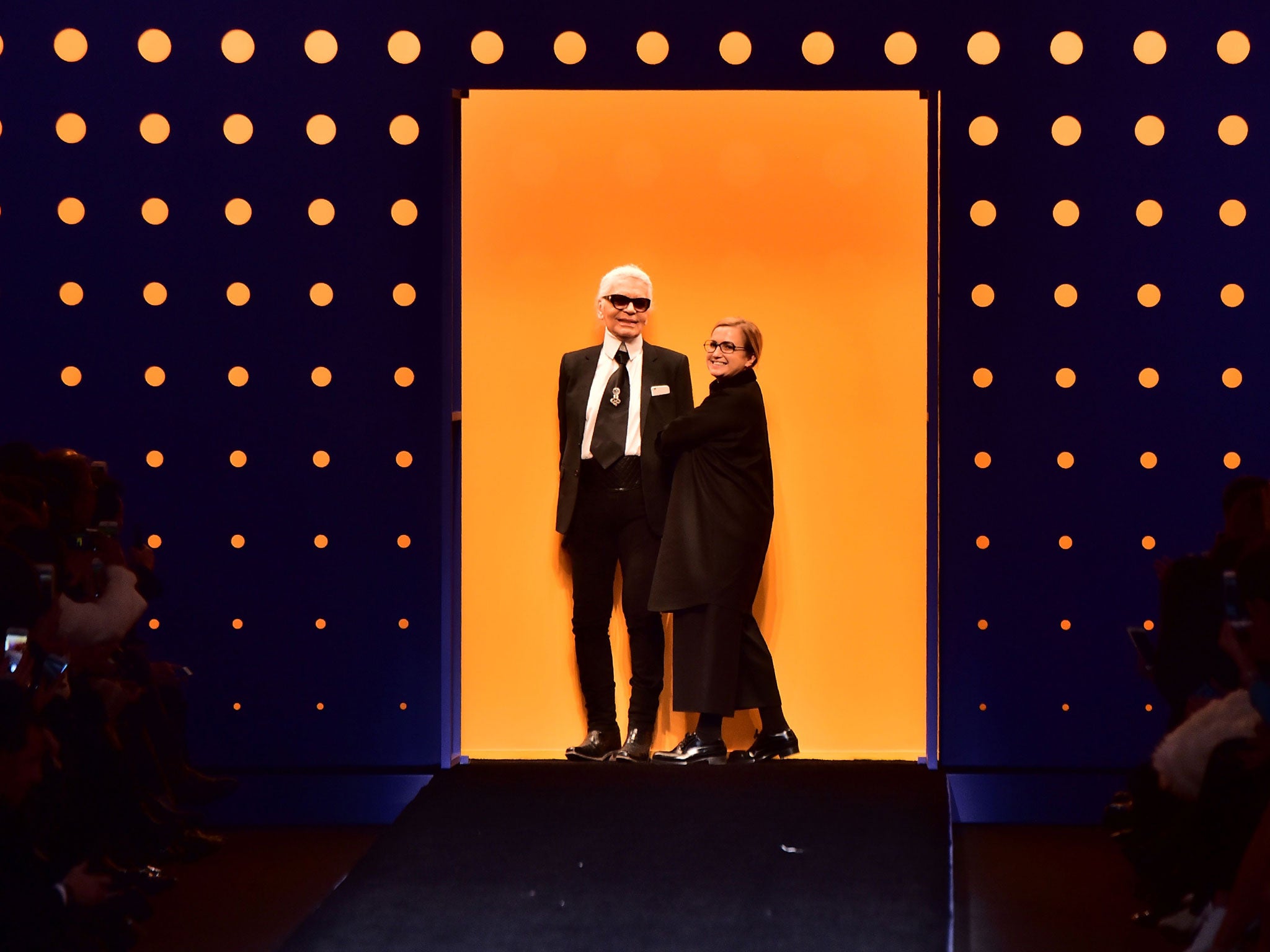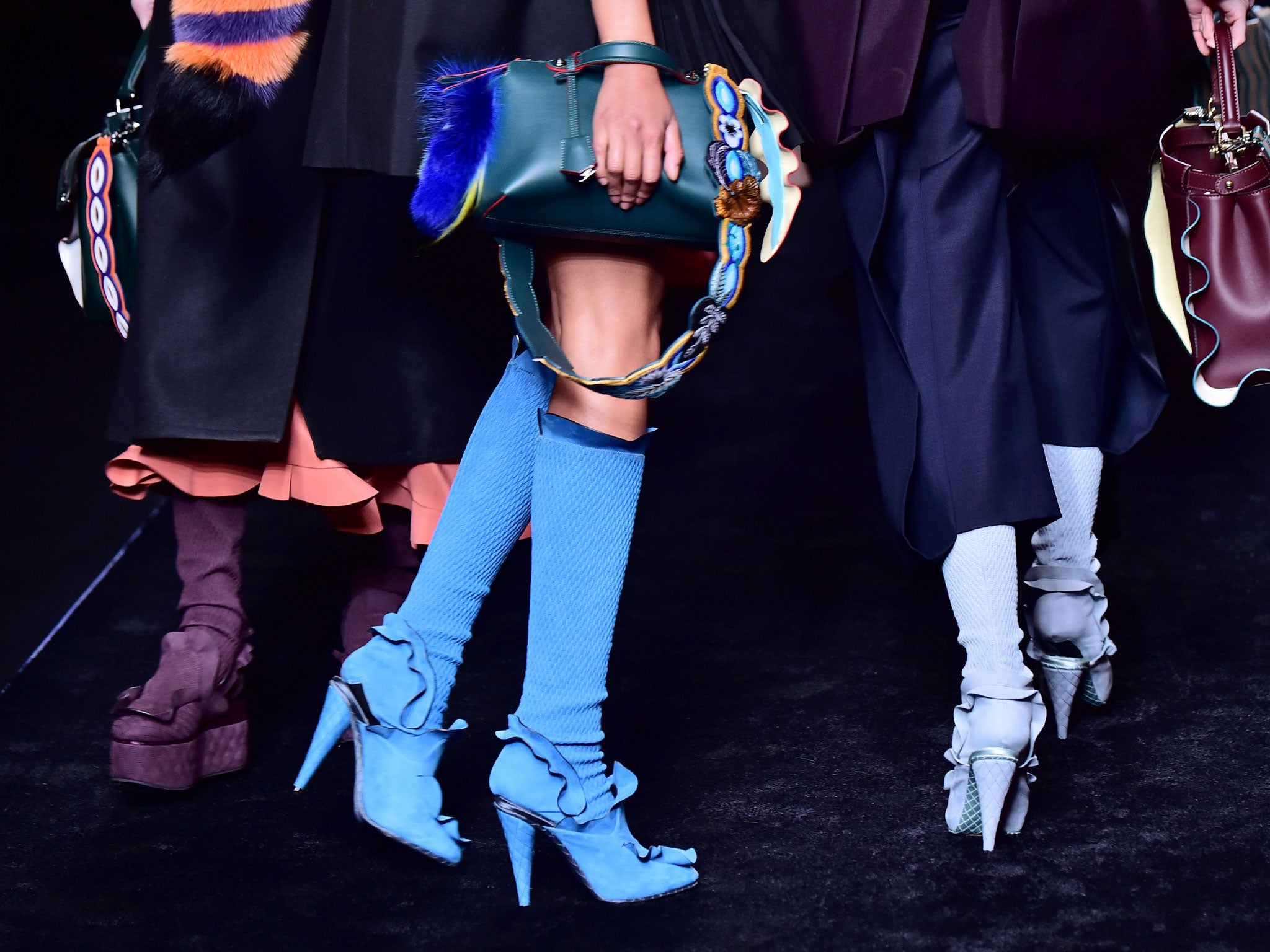Milan fashion: Prints, Pokémon, pragmatism ... and plenty of profit
Frill-seeking, charming prints, scrambled legacies – even human furry dice. That adds up to a disconnected Milan fashion experience, but probably nets profits, says Alexander Fury

Your support helps us to tell the story
From reproductive rights to climate change to Big Tech, The Independent is on the ground when the story is developing. Whether it's investigating the financials of Elon Musk's pro-Trump PAC or producing our latest documentary, 'The A Word', which shines a light on the American women fighting for reproductive rights, we know how important it is to parse out the facts from the messaging.
At such a critical moment in US history, we need reporters on the ground. Your donation allows us to keep sending journalists to speak to both sides of the story.
The Independent is trusted by Americans across the entire political spectrum. And unlike many other quality news outlets, we choose not to lock Americans out of our reporting and analysis with paywalls. We believe quality journalism should be available to everyone, paid for by those who can afford it.
Your support makes all the difference.Before the autumn/winter 2016 Fendi show, in an aircraft hangar-sized space in south-west Milan, a couple of 6ft gonk-fur muppets buffooned about. They were, oddly enough, not examples of the interlopers that populate fashion shows, obstructing entrances and exits with garish get-ups like visual buskers angling after… I don't know, jobs or photographs or maybe just attention. They were Fendi mascots, of sorts, named Piro-chan and Bug-kun, like high-fashion Pokémon. They were inspired by a couple of the fuzzy keyrings – part chatelaine, part furry dice – that Fendi sells so very many of. Many fashion consumers take a similar approach to that of Pokemon aficionados when it comes to Fendi's three-figure bits of fluff. They buy them in bulk, in an attempt to catch them all. Fendi calls them "Bag Bugs" and they're infesting fashion.

You don't often see oversized keyrings dancing around on Milan catwalks – even at shows like Jeremy Scott's Moschino, a label in whose via Sant'Andrea flagship window currently stands a trio of mannequins modelled on the popular cartoon series The Power Puff Girls, heads 4ft-wide above luridly printed jersey separates. Fendi is a patrician Roman fur house which, back in July, showed a sable coat flecked in solid silver, reputed to retail for €1m (£791,000). Nevertheless, they still show fuzzy, multicoloured, fun stuff that has proved highly influential across the past half decade, helping to propel the house's fortunes into the big league – Fendi's turnover surpassed the magical €1bn mark last year. If, at the end of the 20th century, Fendi was known for its squishy handbag known as the "Baguette", this millennium, its signature item is the Bag Bug.
That's a hefty back story for today's Fendi, but emphasises the fact that the clothes aren't really the focus of the business, although they're designed by Karl Lagerfeld, which ensures they warrant attention. This season, Lagerfeld decided to make waves – literally, in terms of running rivulets of pie-crust frills up and down and around every available surface. Some were tightly packed across coats, mimicking the appearance of Fendi's signature fur. Some frilled into yokes and jabots and slightly prissy, gypsy-ish dresses, mimicking the appearance of Princess Anne in the mid-Seventies. A large Fendi satchel they call the Peekaboo was edged in a pie crust of leather like a plump Cornish pasty. Boots seemed piped with ruffles, as if models had sunk their feet into especially juicy sea anemones. Bits of multicoloured, marshmallowy fox floundered about the figure, in coats and stoles and those add-ons and clip-ons and carabiner-ed clumps of fur.
It didn't feel messy, overall, but this Fendi show felt a tad disconnected, like a jigsaw puzzle with a few pieces lost. Many Fendi shows do. While Lagerfeld designs the clothes, Silvia Venturini Fendi has responsibility for accessories. While they were on the same wavy wavelength (a frilly blouse paired with a frilly bag), there's an undeniable disparity, a dichotomy. Which is perhaps to be expected when two different mindsets are at work – Fendi is Roman, a renaissance woman who loves ornament and colour; Lagerfeld is German and habitually dresses like a lithograph. There's an engaging design tension in their collaboration, the longest in fashion land (51 years and counting). But sometimes it feels quite tense.
There is no dichotomy at Pucci: it's about colour, sportswear, swirly-whirly print, a hint of Sixties. It's a well-established style, immortalised in umpteen books, and each designer who has taken the helm since the death of Emilio Pucci himself in 1992 has struggled with how to reinvent a house that doesn't need reinvention, really, insomuch as the prints designed by Pucci back in the Sixties are still the creative and commercial backbone. So what is there for a designer to do? I wonder how the decision came about to place Massimo Giorgetti at the helm, a young Italian sportswear designer who replaced Peter Dundas. Dundas's aesthetic is good-time girl in a glitzy gown (he's now at Roberto Cavalli, where he showed a well-received collection in much the same mould on Wednesday night). Presumably the intention was to reposition the brand as something less precious and more pragmatic. That's fashion speak for cheaper.

Giorgetti's collection didn't look cheap, but it was certainly more immediately accessible than the shows of his predecessor, drawing on Pucci's history in streamlined second-skin ski-wear. That's how Emilio, an avid skier, originally started in the rag trade. And its where Giorgetti pulled intarsia patterns of indeterminate mountain ranges from to pattern suctioned-in sweaters and down-stuffed coats. After a first season that misstepped and thrashed to find a new identity for Pucci, this show demonstrated Giorgetti's grasp of the archive and ability to re-invigorate those terribly old and possibly quite tired psychedelic prints with new energy. Print is Giorgetti's specialty – which underscores a reason for his appointment. This season proved he can take designs from the label's archive, toy with them, and make them feel new. The next challenge is making something new that can slot into that Pucci tradition, and similarly stand the test of time.
Or maybe he should just sell lots of keyrings and rake in the big bucks?
Join our commenting forum
Join thought-provoking conversations, follow other Independent readers and see their replies
Comments